
About the Apiary
An informative and sometimes humorous column published in
The New Zealand Beekeeper Journal
MONITOR HIVES DURING THIS MILD WINTER
About the Apiary - August - 2016The cold weather has finally arrived, with fronts distributing a dusting of snow on the mountain ranges. The previous warm spell has resulted in many spring sources flowering early, allowing the bees to bring in valuable pollen and nectar. In the cities, where it’s warmer due to the amount of reflected heat off the roads and pavement, kowhai, koromiko and bottle brush are flowering well out of season. Tree lucerne, Spanish heath, kohekohe and camellia, which normally flower during autumn and winter, are also providing nectar and pollen (stimulating brood rearing), so the new season is under way.
I seem to be seeing far more shrubs flowering and wondered if this season is in advance of our normal season, so I asked a flower grower who was out picking jonquils. He was well covered in warm clothing, with a drip of sweat running off his nose. “No,” he said, “we were picking these flowers at the same time last year.” A five percent price increase at the market can make a great difference in his income. Seems that his profession can be just as fickle as beekeeping.
Wasps have also benefited from this warm weather. Nests that normally would have been killed by the cold, wet weather are still going strong, probing hives for a chance to steal their honey stores. Hopefully this present cold snap will put an end to their existence.
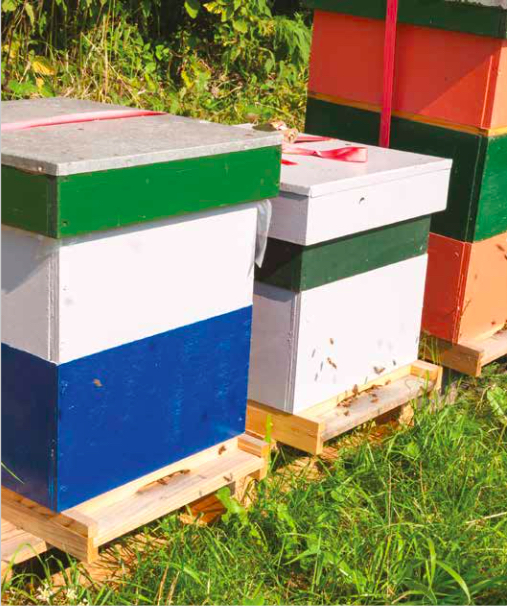
Robbing and mites
The other day I was called to stand up one of my hives probably knocked over by a cow having a scratch. I have left plenty of honey on my hives this winter, so I’ll have stores available when I split them in the spring. This hive had brood in the bottom three supers, drones among the bees and drone brood on half a frame. The bees had built their first queen cell bud along the bottom of a frame. I took out a couple of frames of capped brood from this hive to strengthen a nuc and replaced them with drawn frames to give the bees some extra room and reduce crowding. I don’t want them to swarm when the weather warms in the spring.
What alarmed me most was that the frames in the bottom super contained wet honey. The bees had been working kohekohe and tree lucerne, but this was just too much honey— the bees had been robbing something. A quick look around my nearby apiaries showed four hives dead, three by mites and being robbed. After a careful check, I put the spare supers with honey from the dead hives on nearby hives (all marked so they can be traced) and put the bottom two boxes into storage.
I cleaned the mesh bottom board slides on all hives in these apiaries and went back a week later to find a couple of hives had lots of mites on the slide. I stripped down these hives and put in miticide strips. It was 16°C, so no likelihood of chilling larvae.
A reminder to all beekeepers: don’t skimp on strips. Follow the instructions on the packet and put in a full treatment as the mites are developing resistance. Give them a king hit and remove the strips within eight weeks, then monitor a couple of weeks later to see if you have reduced mite numbers. Those failing to check their hives could find it doesn’t take long before they see hives collapsing. It was quite a shock to find dead hives, but it’s been a very warm winter.
I also checked a few nucs. A couple that went into winter with laying queens now had drone-laying queens so I removed them and the bees from these nucs and merged them with others. Some of these were fairly tiny so could do with the boost in bee numbers. For fun, I squashed one of the drone-laying queens on a post 50 metres from the apiary. The pheromones from this queen may entice a swarm to settle there if one comes off the apiary, which is insurance in case I fail to split the hives in time.
In talking to other beekeepers, their hives are pumping as well with boxes full of bees. Keep a close eye on your hives because once there’s large areas of brood, they can quickly chew through their stores and starve.
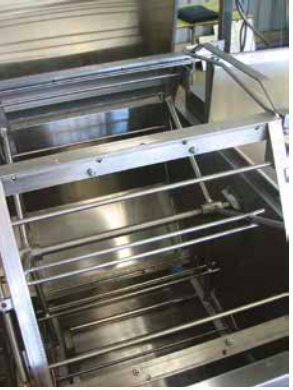
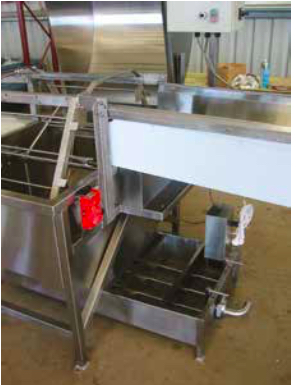
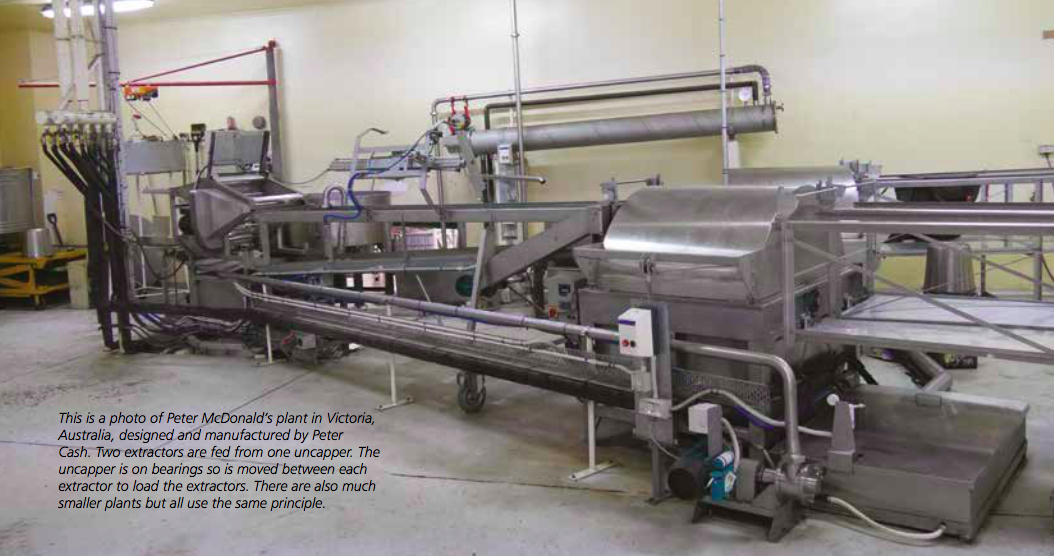
The photos above are of the same plant we and several others have purchased, minus the uncapper. This plant is designed and manufactured by John Bowland, Victoria, Australia.
Honey extracting equipment
There are a lot of new commercial beekeepers in the industry who may be thinking of extracting their own honey instead of having it contract extracted. There are advantages to be able to get your honey off early instead of waiting in line, but there are huge financial implications and lots of regulatory hoops to jump through, all involving lots of paperwork.
At conference we got a glimpse of what we would all like to end up with regarding extracting equipment, but needs must and we all start with the essentials and work to refine our processing equipment as we can afford it. It took me 20 years to get to where I am today, but in those days there wasn’t the choice we have today.
Look across the Tasman at their honey processing plants and see what they do with very little labour; e.g., horizontal extractors that push the frames through without the need to handle them at each step. Their industry spent a lot of time perfecting equipment that can process honey quickly, as honey is removed every three weeks when there’s a good honey flow.
I remember the old days where we didn’t have wax spinners and fine filters. Honey was pumped into a big vat and allowed to settle overnight. Wax would come to the surface. The honey in the bottom of the tank would be clear and clean, so this was run off until tiny wax particles started to appear. Then the next day’s processing was pumped in and so the process went on. Wax could be skimmed off to reduce the amount in the vat but it wasn’t essential.
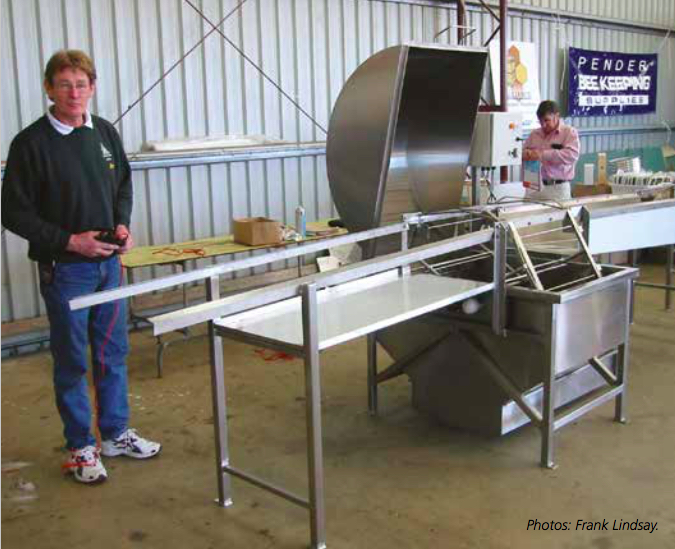
I remember visiting Arataki Honey’s plant in the Hawke’s Bay in the 1980s. It was at the end of their extracting season and they were digging wax out of their huge storage tanks with a shovel. Perhaps the most efficient bit of plant to become popular in the last 20 years is the Archimedes screw, which separates wax and honey straight out of the uncapper.
Educational resources for new beekeepers
For the new beekeeper, last year in Canada I purchased the Ontario Beekeeping Manual. They are not set up to automatically sell them overseas but if you are interested, contact them at http://www.ontariobee.com/outreach/manuals-books-dvds
Canada’s beekeepers’ association books give very good advice to newbies and those expanding their beekeeping. The information can be made applicable to New Zealand conditions: just reverse the calendar and add a few of our native species, and of course there’s no worry about bears. Canadians have technology transfer teams made up of recent university graduates who go out and teach the latest beekeeping practices at field days.
We don’t have anything like this in New Zealand, but we do have very experienced commercial beekeepers who pass on their knowledge at field days. We also have correspondence and practical courses in beekeeping run by a number of institutes, the Telford Certificate in Apiculture being one of the oldest.
Bee aware of biosecurity
The other day a beekeeping friend suggested that he could bring back a queen from overseas, to give me a rise and yes, I rose to the bait. He knew perfectly well the risks but perhaps a lot of the newer beekeepers may not know why we have such strict biosecurity rules.
We were lucky that it took so long for sailing ships to reach this country. Anything that was sick didn’t make the voyage, so most of what was imported into the country was disease free.
This system didn’t work so well in the 1870s, when hives of Italian bees came in with AFB. In those days, beekeepers were unaware of how this organism spread. New Zealand had lost 70% of our beehives by 1890. We had very few biosecurity breaches during the next 100 years, but that next one was a biggie when varroa arrived in 2000, perhaps by someone wanting a better queen bee smuggling one in, and more recently we found Nosema ceranae. Despite these incursions, we are still free ofa lot of diseases and we would like to keep it this way.
At the moment the Israeli Acute Paralysis Virus (IAPV) is keeping honey from being imported into New Zealand. There are border interceptions of risk goods every few days, some being honey, but a few get through our net.
Bees can carry a number of mite species; one, the tracheal mite Acarapis woodi, spends most of its life internally in bees’ breathing spiracles. Viruses can be spread sexually. A queen bee could bring in a new virus, and even ants that have eaten the debris from inside a hive overseas could potentially bring in new bee viruses.
Our environment is very fragile: don’t spoil it for future generations. We have spent millions trying to improve our bees and some of this research is paying off. Don’t short-circuit this process by trying to bring in something you think might be better. Most bee species have been tried here in the last 140 years and what we have is the best that has adapted to our country.
The other major virus we have at present is hive theft. Brand all your gear, and go to page 19 for further advice on theft prevention.
Planning for the new season
During winter we plan for the coming season. We work out where we went wrong and, with luck, correct these errors so they don’t happen again. Beekeeping is a long learning process. Sometimes we do it right. Often we get tied up putting too much time into our weaker hives instead of concentrating only on the good ones. Requeen those not going ahead and if they fail to take off, unite them. Take splits or nucs off your really good hives, not the duds. Remember the 80/20 rule: 80% of your time is spent on 20% of your hives. Make decisions early and get these out of your system.
Don’t leave it too long before ordering new gear. Some of the bigger companies are in expansion mode and are dominating orders.
Things to do this month
Make up and prepare equipment for replacement or for additional hives. Check hives after storms. I tie my hives with a nylon rope so the boxes keep together, even when on their side. Commercial straps are available.
Check hive weights: some commercial beekeepers are starting three- to four- week feeding rounds. Check several hives in each apiary for natural mite fall or do an alcohol wash—high numbers indicate robbing or poor autumn treatment. (A winter honey flow is also a sign of robbing, unless you are close to the South Island beech forests.)
Stimulate your queen breeder and drone production hives so they get building rapidly, ready for the first queen matings in October when temperatures reach 20°C. Drone production needs to be a month ahead of queens so they are mature and ready to mate.
Frank Lindsay